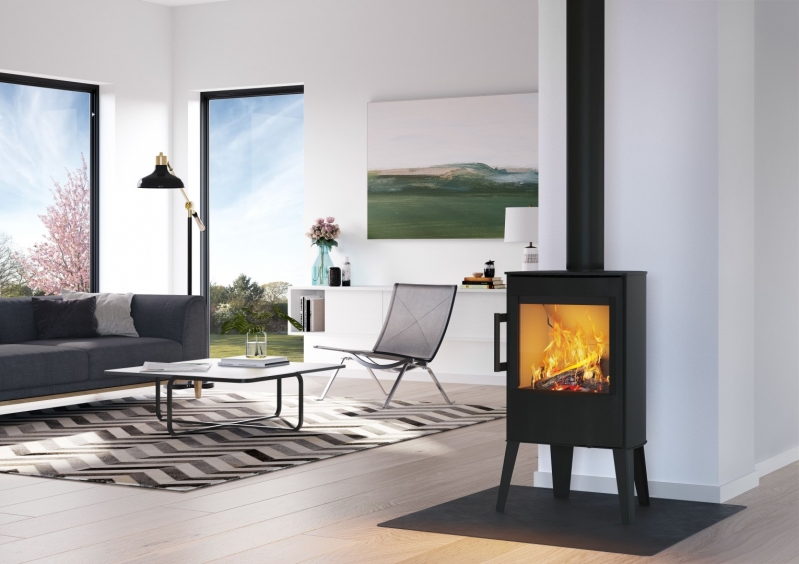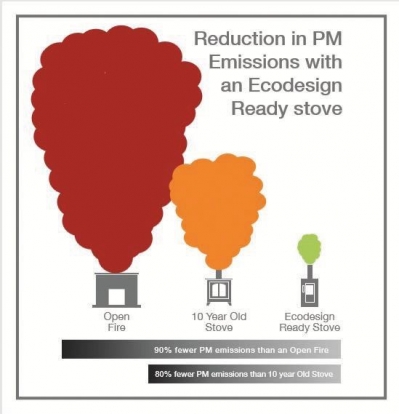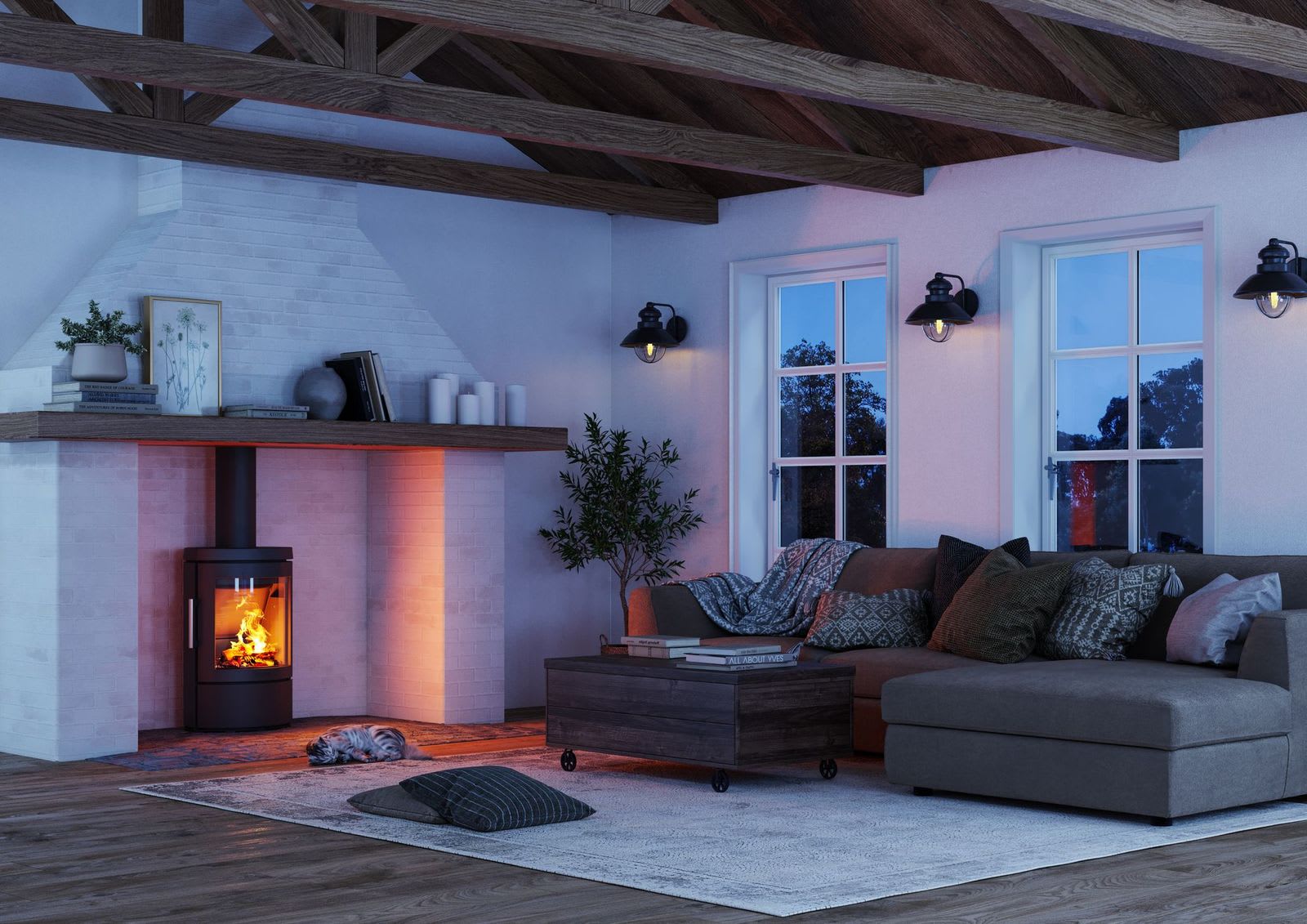The romance of a wood burner is timeless, but recent reports have cast doubt over whether it’s possible to love your flames and love the planet. Is it either/or? We checked in with The Stove Industry Alliance to get the lowdown.
Many stove owners will argue that they are the original environmentalists and wood burners have been heating homes for centuries, but there have been worrying reports about the potential risks both to health and the environment. The Stove Industry Alliance was formed in 2008 and is a trade association of stove manufacturers, distributors and retailers, wood fuel suppliers, flue and component manufacturers and other interested industry bodies, and it represents the stove industry in discussion with government departments whilst working closely with a range of industry bodies such as Kiwa, OFTEC, Woodsure and the Federation of British Chimney Sweeps. They’re eager to reassure us that burning wood in a modern wood burning stove is in fact, a highly efficient, cost effective, low carbon and low emission way to keep warm this winter.
Wood burning and air pollution
Within the 2019 Clean Air Strategy, the UK government said that 38% of PM2.5 emissions (fine particulate matter) come from “domestic combustion”. When reported in the press this has been taken to refer to modern wood burning stoves. However, a significant proportion of the emissions currently recorded as domestic combustion come from unregulated outdoor burning such as bonfires, firepits, BBQs, and incinerators. Wildfires are also included within current government figures and so, too, are all open fireplaces. The SIA has long disputed the accuracy of this figure; as well as being flawed for the reasons outlined above, the calculation relies on an incorrect over-assumption of wood fuel usage for domestic burning, as well as out of date appliance emissions factors.
The proportion of emissions that do come from burning wood for indoor heating can be dramatically reduced and carefully controlled by ensuring the use of stove models which are compliant with the new Ecodesign Regulation for solid fuel space heating appliances, which came into force in the UK on 1 January 2022. These models produce up to 90% less emissions than an open fire and up to 80% less than a stove that is 10 or more years old.
In fact, in a modern stove, burning wood for domestic use is a renewable and sustainable, very low carbon and low emission way to heat your home. It reduces our reliance on fossil fuels for domestic heating and also provides the security of being able to heat the home in the event of grid outages. Importantly, and most relevant at this time of rising fuel prices, a wood burning stove costs about a third of the price of electric heating and also less than gas central heating for the average household.

David Lane, Director and Owner of Manor House Stoves Ltd in Garsington just outside Oxford, comments:
“Over the past three years we have seen reputable stove manufacturers working steadfastly to re-design the engineering of their most popular models put them through rigorous testing to achieve the minimal EcoDesign standard, showing a commitment to – and belief in – woodburning as a relevant contributor to a sustainable heating economy. And people are responding positively to the new regulations! We have seen a steady increase this year in customers replacing their existing appliances. A lot of seasoned stove users are amazed at the difference in operation, controllability, heat output and fuel use of these new designs compared to their ‘done very well all these years’ stoves.
With the volatility of the fuel market and increasing extreme weather incidents we continue to respond to customers who are not on main gas supply or are vulnerable to power cuts, ensuring they have an alternative reliable eco-conscious carbon neutral heat source.”
A modern stove is so much more than a heat source; it also provides a relaxing and warming focal point which brings its own health benefits; de-stressing, relaxing and bringing people together. So, curl up on the fireside rug, make a warming cuppa or pour yourself a glass of wine and re-light that fire.
SIA’s top tips for cost effective, low carbon, low emission wood burning:
- If you currently use an open fire or an older wood burning stove, i.e. one that is 10 or more years old, consider upgrading.
- Choose a model that is compliant with Ecodesign.
- Your local SIA Retail Group member can help advise on the best stove for you and your family.
- Ensure your stove is fitted and maintained by an appropriately qualified competent person such as HETAS or OFTEC registered.
- Only use wood fuel that is 20% moisture content or less.
- Never use waste or chemically treated wood in your stove.
- When re-fuelling your stove, open the door by just a small amount and wait a few moments to allow the pressure in the stove to equalise before opening the door fully to re-fuel. Close and latch the door immediately after re-fuelling.
- Have your chimney swept at least once a year by a qualified chimney sweep.

Useful links: federationbcs.com, stoveindustryalliance.com
Images of fires provided by Manor House Stoves









